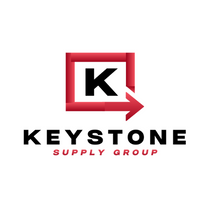Nitrile gloves are one of the most essential products in the healthcare and industrial supply chain — yet, despite their simplicity, few buyers fully understand the differences that affect performance, safety, and cost.
In 2025, the nitrile glove market continues to evolve. Post-pandemic demand has stabilized, but pricing, testing requirements, and manufacturing standards are shifting once again. Supply shortages have eased, but cost pressures and compliance expectations are higher than ever.
Whether you’re purchasing gloves for a hospital, laboratory, or maintenance facility, understanding the standards and specifications behind each glove can help you make smarter, safer, and more cost-effective decisions.
This guide breaks down what to look for, how to evaluate suppliers, and how Keystone Supply Group (KSG) helps procurement teams stay ahead of industry changes.
Understanding the Standards That Matter
Not all nitrile gloves are created equal. The first step in choosing the right glove is understanding the key performance standards and testing requirements that define medical and industrial quality.
ASTM & FDA Requirements
ASTM D6319: Defines performance standards for medical-grade nitrile examination gloves.
ASTM D6978: Tests gloves for chemotherapy drug permeation resistance, required for chemo-rated use.
FDA 510(k) Clearance: Confirms the glove has been tested and cleared for medical use. All exam gloves must have an active 510(k) number.
AQL (Acceptable Quality Level): Measures defect rate. AQL ≤ 1.5 is standard for medical-grade gloves, while AQL ≤ 2.5 may suffice for non-medical tasks.
If your staff handles chemotherapy, hazardous drugs, or opioids, confirm the glove is ASTM D6978 chemo-tested and, ideally, fentanyl permeation tested. Many facilities now require these as standard safety features.
Matching Gloves to the Right Application
Different environments require different glove performance levels. Selecting a single “universal” glove often leads to overspending in one department or under-protection in another.
Clinical & General Exam Use
Thin (4–5 mil) nitrile gloves provide tactile sensitivity for patient care, diagnostics, and lab work. Comfort and dexterity matter more than extreme durability here.
Chemo & Hazardous Drug Handling
Thicker gloves (6–8 mil) tested to ASTM D6978 standards protect against permeation from chemotherapy drugs and toxic substances. These gloves often feature longer cuffs and higher tensile strength.
Environmental Services & Maintenance
Heavier nitrile gloves (≥8 mil) or textured-grip gloves improve puncture resistance and control in wet environments — ideal for janitorial, cleaning, and equipment sanitization staff.
Food Service, Lab, & Industrial Applications
Ensure gloves meet FDA Food Contact regulations or applicable ISO standards. Many labs prefer color-coded gloves to visually separate clean and contaminated zones.
Pro Tip: Standardizing color by department (e.g., blue for clinical, black for janitorial) improves compliance and reduces cross-contamination risk.
Cost Control Without Compromising Safety
Glove prices remain higher than pre-2020 levels, but smart procurement practices can offset rising costs.
Standardize SKUs Across Departments — Limit your organization to 1–2 approved glove models that meet most requirements. This reduces confusion and unlocks bulk pricing discounts.
Evaluate Case Packaging — Some brands offer 10×100 gloves per case (1,000 total) versus 20×100 (2,000 total). Doubling case count often reduces per-unit cost.
Leverage Usage Analytics — Review your average glove usage by size (S, M, L, XL) to optimize inventory and reduce waste. If 80% of your staff wears medium, adjust order ratios accordingly.
Negotiate Direct-from-Manufacturer Pricing — Cutting out middle layers can save 10–15% per case, especially on high-volume SKUs.
At KSG, we perform free cost analyses comparing your current glove spend to our manufacturer-direct network, often identifying 8–12% savings immediately.
Reducing Backorder Risk and Ensuring Consistency
Even with stabilized supply, the nitrile market still experiences sporadic shortages caused by factory shutdowns, raw material constraints, or shipping delays.
To safeguard your inventory:
Maintain at least one approved alternate brand for every high-volume glove SKU.
Confirm your vendor can provide allocation transparency during shortages.
Partner with suppliers who stock gloves domestically here in the states
Keystone Supply Group continuously monitors glove inventories across multiple global manufacturers, allowing us to source alternates quickly when primary products are delayed.
How Keystone Supply Group Helps
At Keystone Supply Group, we simplify the glove procurement process through:
Multi-brand sourcing: Direct partnerships with major nitrile manufacturers for competitive pricing.
Specification matching: Side-by-side comparisons of thickness, chemo testing, and AQL ratings to find equivalent or superior products.
Allocation management: Priority access to inventory for customers during backorders or surges.
Transparent communication: No hidden markups or misleading “in stock” claims, only verified availability and honest lead times.
Whether you need exam-grade nitrile gloves for a hospital network or heavy-duty gloves for janitorial operations, KSG delivers consistent quality, fair pricing, and reliable fulfillment.
Request a Free Glove Cost Comparison
Want to know if you’re paying too much for nitrile gloves? Send us your current SKUs, sizes, and case counts. We’ll perform a no-obligation price comparison against our manufacturer network and return a detailed report, often revealing double-digit savings opportunities.
Request a Free Cost Analysis Today: Kevin@keystonesupplygroup.com





